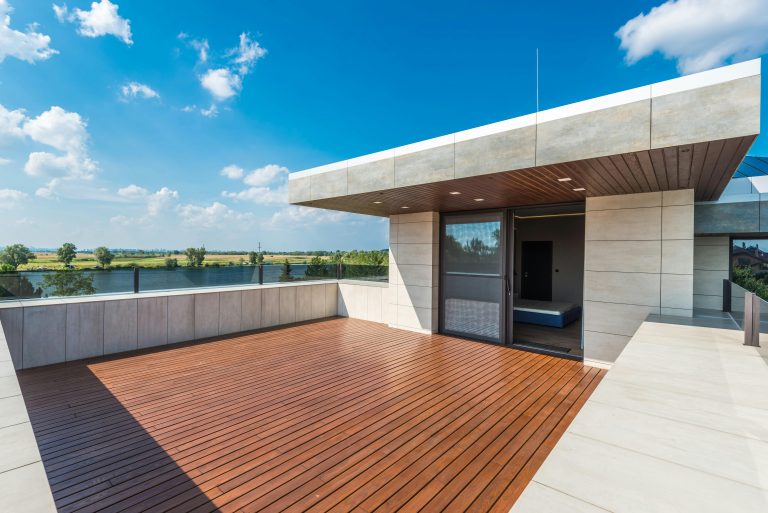The rooftops of our cities are changing. No longer just the forgotten fifth façade, they’re becoming extensions of living space, architectural statements, and symbols of a lifestyle shift towards greener, more conscious design. With space at a premium, especially in urban environments, rooftops are being reimagined—not just for utility, but as elevated spaces that combine sustainability with striking design.
From leafy havens to social terraces, going green on the roof isn’t just about planting grass. It’s about transforming underused surfaces into meaningful, beautiful spaces that contribute positively to both daily living and the wider environment.
Design Ideas for Green Rooftops
Rooftop greenery can take many forms, depending on space, budget, and purpose. For some, it’s a quiet patch of planting that softens the view from inside. For others, it’s a fully functional outdoor zone that blends hard landscaping with natural elements.
Popular ideas include:
- Minimalist eco-terraces: Clean-lined decking paired with planters filled with sedum or drought-tolerant species offers a simple, modern take on rooftop gardening.
- Outdoor rooms: Zones for lounging, dining or working are now being integrated into roof layouts—made more inviting by green walls, climbing plants, or living pergolas.
- Urban farming: Raised beds and container planting make it possible to grow herbs, salad greens, and even fruit in the heart of the city.
- Biodiverse planting: Native wildflowers, mosses and low-maintenance succulents can provide food and habitat for birds and pollinators, while creating a textured, natural look.
Good design is about balance. A well-considered rooftop respects both function and form, enhancing how a space looks and how it’s used, season after season.
Sustainability Meets Style
It’s no secret that urban greenery plays a role in managing city heat, improving air quality and reducing stormwater runoff. But there’s also an aesthetic quality to a green roof that makes it more than a practical upgrade. It’s a visual softener, a design focal point, and an architectural feature that gives a property something unique.
What’s more, the look of green roofing has evolved. Today’s systems are designed to complement contemporary building styles. Subtle planting beds, sculptural seating, integrated lighting and modular layouts all contribute to a sense of cohesion between indoor and outdoor spaces.
Installing a green roof isn’t simply a gesture towards sustainability—it’s a design choice with depth. Whether viewed from the inside or enjoyed as a liveable space, it becomes a key feature of a modern property. For those interested in installing a green roof, there are options available that merge technical reliability with architectural flair.
Space-Saving and Multi-Functional Uses
In cities where ground-level space is limited, rooftops offer an unexpected solution. The flat roof of an extension, garage or apartment block can easily be converted into something useful and attractive.
Consider:
- Private gardens for upper-floor flats
- Co-working nooks with natural shade
- Yoga decks surrounded by greenery
- Entertaining zones with built-in planters and low seating
These rooftops not only bring lifestyle perks, but can also boost property value and buyer appeal. Developers are recognising that a well-designed green roof speaks to modern expectations around functionality, aesthetics and environmental responsibility.
Rooftop space is no longer seen as leftover. With the right treatment, it becomes an asset—a multi-use zone that’s as practical as it is visually appealing.
Green rooftops are more than a passing trend—they represent a shift in how we think about urban space and property potential. From compact terraces to expansive rooftop retreats, these spaces are adding a new layer to modern living.
By combining practical benefits with striking design, green roofing offers something more: a chance to live a little differently, with nature just above the ceiling. As more homeowners and developers look upward for solutions, rooftops are no longer just protection from the elements—they’re part of the lifestyle itself.


